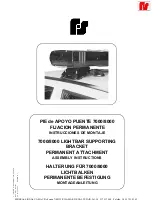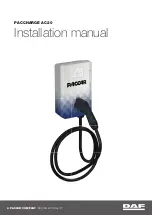
CONTINUED
To determine if a lap/shoulder belt
properly fits a child, have the child
sit in the rear seat, all the way back
against the seat, and put on the seat
belt. Follow the instructions on page
. Then check how the belt fits.
If the shoulder part of the belt rests
over the child’s collarbone and
against the center of the chest, and
the lap belt rests over the child’s
hipbones and touches the tops of the
thighs as shown, the child is
probably big enough to wear the seat
belt.
However, if the shoulder belt
touches or crosses the child’s neck,
or if the lap belt crosses the child’s
stomach, the child needs to use a
booster seat.
This could result in serious neck and
internal injuries during a crash.
This could cause
very serious injuries during a crash.
It also increases the chance that the
child will slide under the belt in a
crash and be injured.
Devices intended to improve
occupant comfort or reposition the
shoulder part of a seat belt, severely
compromise the protective capability
of the seat belt and increase the
chance of serious injury in a crash.
If they do, they could
be very seriously injured in a crash.
15
Checking Seat Belt Fit
Do not let a child wear a seat belt
across the neck or over the stomach.
Do not let a child put the shoulder
part of a seat belt behind the back or
under the arm.
Do not put any accessories on a seat
belt.
Two children should never use the
same seat belt.
Protecting Children
Driver and Passenger Saf ety
39
Summary of Contents for Pilot 2003
Page 8: ...4...
Page 62: ...58...
Page 110: ...Instruments and Controls Third Row Seat Armrest Rear Door Pocket Beverage Holders 106...
Page 120: ...116...
Page 125: ...Comfort and Convenience Features Heating and Cooling 121...
Page 133: ...Climate Control System Comfort and Convenience Features 129 REAR CENTER VENT...
Page 272: ...268...
















































